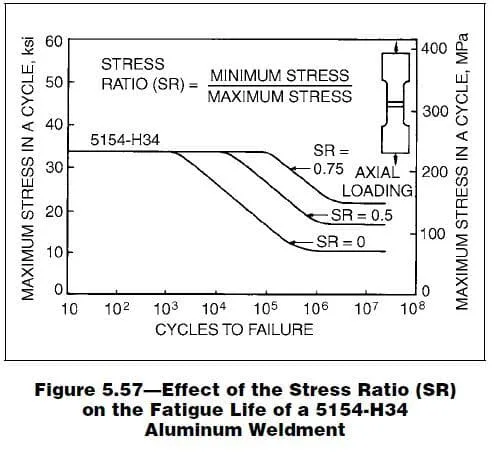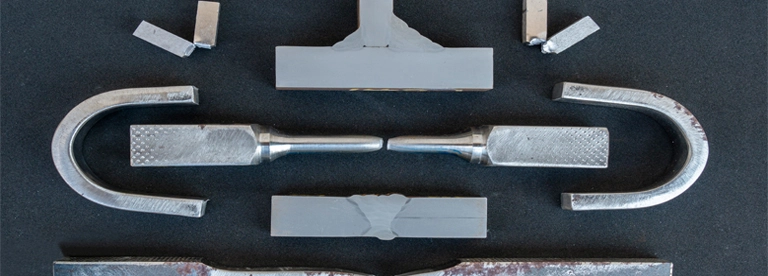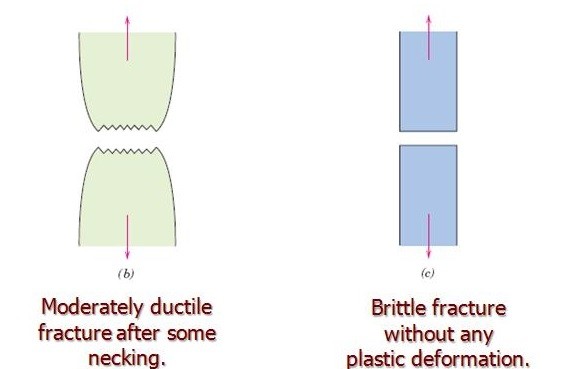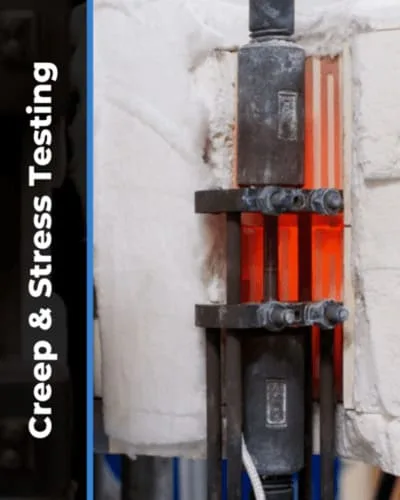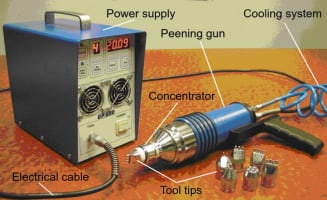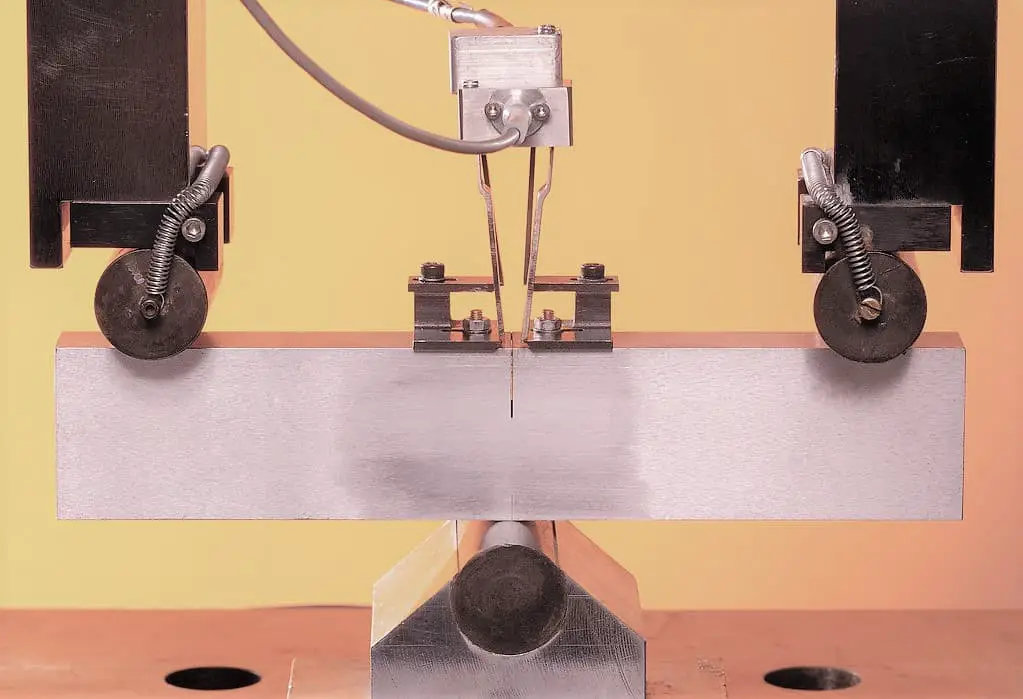Fatigue Failure in Metals
Fatigue failure is a failure mechanism occurring among metals, non-metals and alloys, leading to the weakening of parts and components over time.
Fatigue failure or also called fatigue fracture occurs when materials are stressed repeatedly (cyclic loading such as vibration or fluctuating loads) over a sustained period, leading to the formation of crack followed by the fracture of the material.
Fatigue failure happens when a material experiences repeated cycles of stress below its yield strength, leading to microscopic cracks forming on the surface.
These cracks slowly increase in size until they eventually meet, resulting in the material fracturing under normal operating conditions.
This process is accelerated by factors such as high stress concentrations at sharp edges or corners, temperature fluctuations, corrosion or other environmental factors that weaken the material’s resistance against fatigue cracking.
What Causes Fatigue Failure in Materials?
Fatigue failure or fatigue fracture is a common type of material degradation which occurs when materials are repeatedly subjected to cyclic loading such as tension and compression.
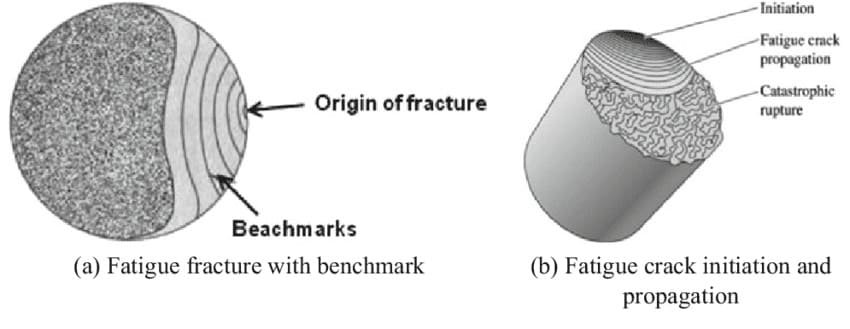
It is the most common cause of mechanical failure in components and structures, leading to decreased reliability and lifespan.
It can happen in both metals and non-metals and is an important factor to consider when designing components of machines or structures.
The main reasons for Fatigue failure in material are:
- Poor Design,
- Cyclic loading,
- Presence of residual stresses in materials,
- Presence of inherent flaws in materials,
- Corrosive environment,
- Poor surface finish,
- Poor material selection and
- Incorrect assembly procedures.
How to Prevent Fatigue Failure?
In order to prevent fatigue failure from occurring it is essential that the correct design parameters are chosen during the engineering process.
Design engineers must select materials capable of withstanding fluctuating loads and take into account environmental conditions that may lead to deformed surfaces or corrosion.
Additionally, all components should be assembled according to the manufacturer’s instructions in order to guarantee optimal performance over time.
This type of failure can manifest in many forms such as cracking, plastic deformation or even complete fracture.
In order to prevent fatigue failure, it is important to identify areas susceptible to this kind of damage and properly manage stress levels.
The fatigue life or number of cycles an alloy can withstand before it fails can be estimated using various methods like finite element analysis or laboratory testing.
It is also important to consider other factors such as temperature and environment during design development in order to optimize strength and durability for any given application.
Fatigue Failure examples
Fatigue failure occurs when these repeated stresses cause microscopic cracks to form within the material, and eventually lead to its complete breakdown.
Common fatigue failures include engine crankshafts, machine components, bridges, aircraft parts and more.
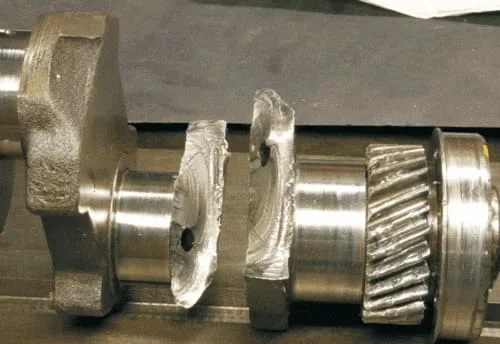
Examples of fatigue failures include an aircraft propeller blade that was damaged due to metal fatigue; a bridge in Minnesota which partially collapsed due to corrosion-induced cracking; and a steel beam that snapped during maintenance on an oil rig platform resulting in the death of three workers.
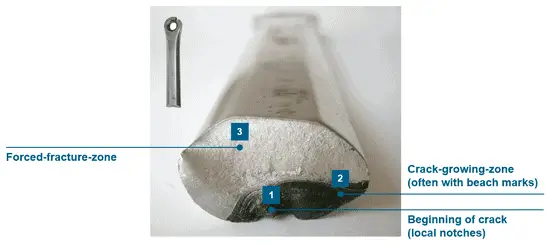
Other examples are numerous: turbine blades that have broken off due to thermal stress cracking; bolts that have sheared off due to cyclic loading; and even car tires that have exploded due to excessive heat buildup from overloading or driving too fast.
